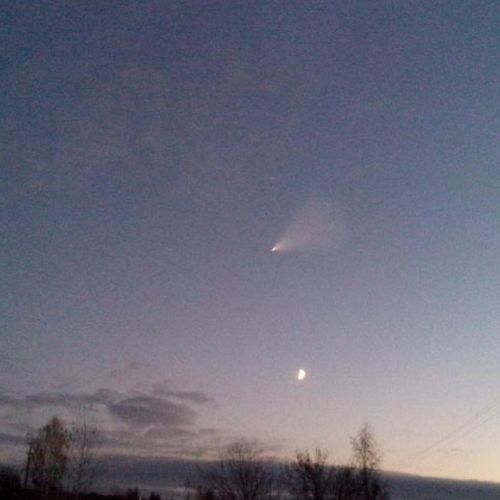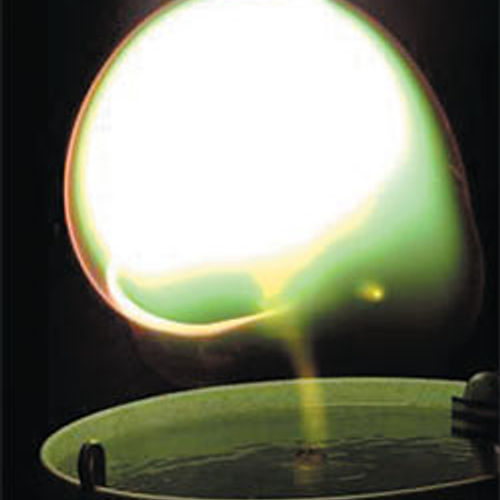| ID | #1705934063 |
| Added | Mon, 22/01/2024 |
| Author | July N. |
| Sources | |
| Phenomena | |
| Status | Hypothesis
|
Initial data
Viktor Grigoryevich Kornilov writes to the Commission on:
In August 1979, I don't remember the exact date, but it was in the third decade, or rather in the second half of the third decade. My comrades and I were on our way to the hunting ground from Leningrad to the Vologda region. Around 3-56 or 4-56 (i.e. 3 or 2 hours before dawn), a luminous dot appeared in the western part of the sky. My friend, with whom we observed a similar phenomenon in Karelia in 1977 (if you remember, in September 1977 we saw something in the Petrozavodsk area and there were many different rumors), but which was not given much importance at that time, and we had different opinions about its origin, pushed me with the words : "Look! A meteorite." But the meteorite grew brighter and gradually approached us. Realizing that we were seeing an unusual phenomenon again, we woke up a friend and stopped the car. The body glowed with a bright light and caught up with us, moving parallel to our movement. When it got closer (I describe only my impressions further, because during further discussion it turned out that everyone saw the details in their own way) it turned out that it was a cone-shaped body with 9 stripes behind (such as jets of gases from engine operation).
The body itself is bluish in color. There was no sound. I had a dog (Mike) with me, she did not react to this phenomenon in any way. There was no way to determine the speed of the body, because we could not determine its distance from us.
The most amazing thing was that as the body approached, dawn came. The northern edge of the sky turned bluish to the entire height with a light approximately emerald green. The light was so strong that you could read the newspaper, but it was already an August night on the opposite side of the car.
Upon reaching the level of the car, the body hovered for a moment, and then, as it seemed to me, exploded. The light from the explosion eclipsed the light that the body had left behind.
The flash was instantly bordered by a rectangular black frame, which retained its rectangular shape. When the black stripes of the frame touched the ground, the upper and lateral parts of the horizon, it became clear that a bright dot was moving away from us in the center of it. Its direction was at right angles to the original movement.
Then darkness began to gather and the starry August night came again.
This phenomenon was seen by 9 people, of whom 6 live and work in Leningrad, including 2 at the All-Union Research Institute of Plant Protection and the Institute of Agricultural Microbiology in Pushkin (in the same building)
Was. we had an attempt to photograph this object, but the pictures came out bad, although something is visible. I can show you the bad pictures and the film.
When I was telling my workmates (both in 1979 and 77 and now in connection with a note in the Work), they asked me if it could have been a ball lightning. no. This is not a fireball. I had to deal with it three times in my life, twice at a distance of 50 m and gradually reduced to 20 (both times it ended in an explosion) and once about 200 m.
And if it seems to me that in 1977 we saw a distorted image of the Moon, then in 1979 it was a derivative of reason, not nature. We observed the movement of this body within 6-8 minutes.
Hypotheses
Meteor

Meteor, "shooting star" is a phenomenon that occurs when small meteor bodies (for example, fragments of comets or asteroids) burn up in the Earth's atmosphere. A similar phenomenon of greater intensity (brighter than magnitude -4) it's called a fireball.
Booster, the rocket and tracks

For UFOs often take stages of rockets, parts of space ships burning in the atmosphere, the launches of various missile technology for military purposes, etc., and traces from them. They attract attention mostly in the dark, but in the day time have a greater aura of mystery.
Formation of the track of the launch vehicle occurs in the tropopause (the layer between the troposphere and stratosphere), which sharply reduced the vertical temperature gradient. The emergence of the so-called "jellyfish" influenced by water vapor, which are subject to enhanced condensation.
Ball lightning

A rare natural phenomenon, a unified physical theory of the origin and course of which has not been presented to date.
There are about 200 theories explaining the phenomenon, but none of them has received absolute recognition in the academic environment. Since this phenomenon was introduced into the scientific sphere by the English physician and researcher of electrical engineering William Snow Harris in 1843, and a scientist of the French Academy Francois Arago in 1855, many hypotheses were put forward. Here are selectively some of them:
Investigation
Resume
Similar facts
Log in or register to post comments


